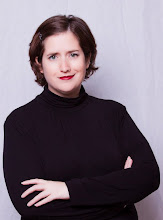Today in photography class we covered light meters and I think I finally "got it" in my head. I was having trouble with the apparent backwards-ness of it. For example, for snow scenes, you're supposed to open up 2 stops, but in my head, I was thinking that snow = bright, therefore you'd want to expose LESS. However, with today's explanation of the gray card, it finally clicked. I'd read about gray cards before and understood that they represent an average scene of equal portions of light and dark - 18% gray. I got that. What I didn't get was how that tied into exposure.
The camera assumes all scenes are average. It sees snow and exposes to properly make the snow neutral gray. Well, snow is white, not gray. So we need MORE light to hit the film to expose the snow areas enough that they're brighter - enough that they're white. Thus, the reason why you open up and expose MORE when you have a bright scene. The reverse is true for black. The camera will take a primarily dark scene and assume those shades are an average scene and make them 18% gray - so dark areas would show up gray. However, we want them DARKER - so we want to expose those areas LESS to KEEP them dark. Therefore, we UNDER expose by x number of stops to keep those dark areas dark.
I think the key to my understanding was thinking consciously that the camera sees ALL scenes as average scenes, containing equal parts dark and light tones. Then, thinking in terms of whether my subject was brighter than neutral gray (needing more exposure) or darker than neutral gray (needing less exposure) - that made it click.
We'll see if I can keep it clicked in my brain and apply it in the field!
Monday, February 4, 2008
Subscribe to:
Post Comments (Atom)








 Digg/phlyersphan
Digg/phlyersphan Flickr/phlyersphan
Flickr/phlyersphan Myspace/phlyersphan
Myspace/phlyersphan YouTube/phlyersphan
YouTube/phlyersphan Last.fm/phlyersphan
Last.fm/phlyersphan Del.icio.us/phlyersphan
Del.icio.us/phlyersphan GMail/phlyersphan
GMail/phlyersphan Technorati/phlyersphan
Technorati/phlyersphan












No comments:
Post a Comment